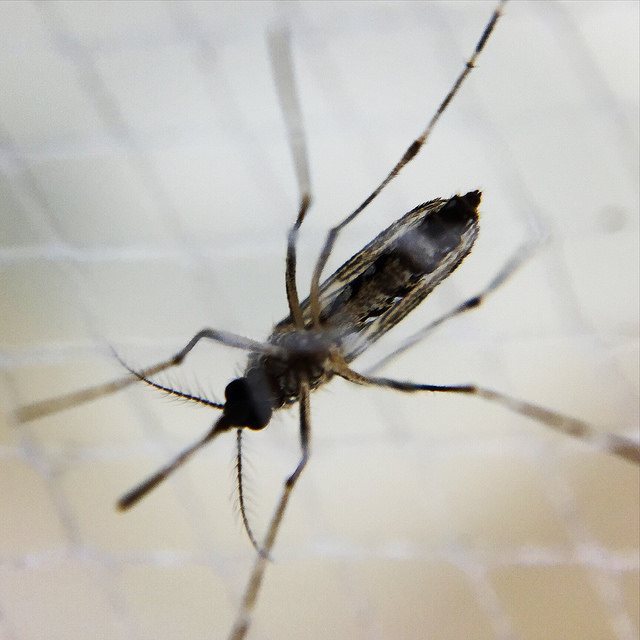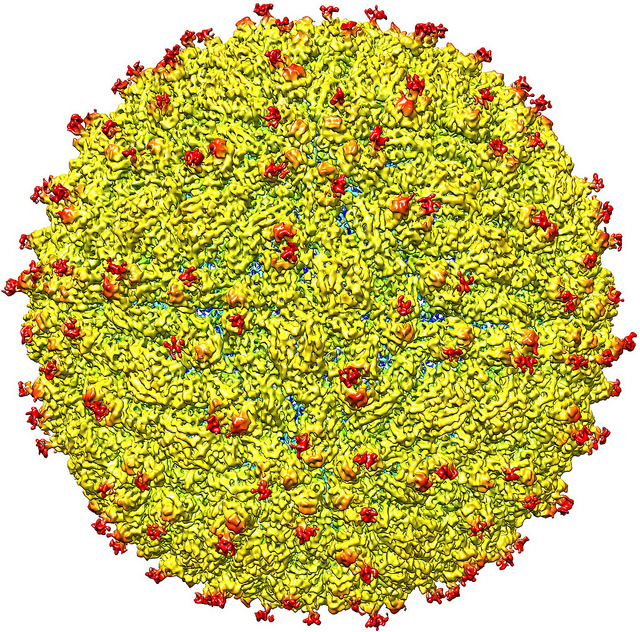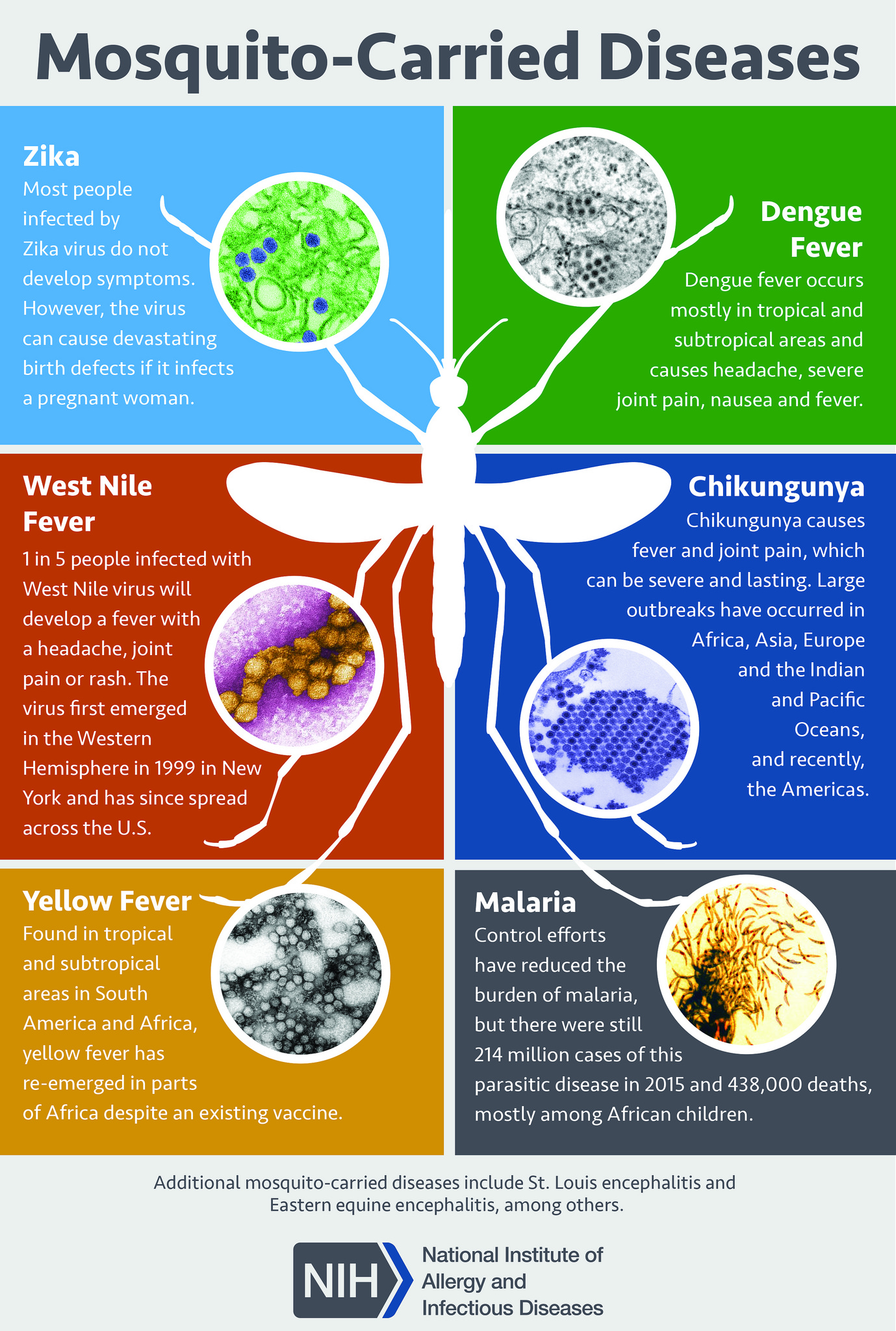[1]
Padilha KP, Resck MEB, Cunha OATD, Teles-de-Freitas R, Campos SS, Sorgine MHF, Lourenço-de-Oliveira R, Farnesi LC, Bruno RV. Zika infection decreases Aedes aegypti locomotor activity but does not influence egg production or viability. Memorias do Instituto Oswaldo Cruz. 2018 Aug 23:113(10):e180290. doi: 10.1590/0074-02760180290. Epub 2018 Aug 23
[PubMed PMID: 30156598]
[2]
Shaw WR, Catteruccia F. Vector biology meets disease control: using basic research to fight vector-borne diseases. Nature microbiology. 2019 Jan:4(1):20-34. doi: 10.1038/s41564-018-0214-7. Epub 2018 Aug 27
[PubMed PMID: 30150735]
[3]
Gharbaran R, Somenarain L. Putative Cellular and Molecular Roles of Zika Virus in Fetal and Pediatric Neuropathologies. Pediatric and developmental pathology : the official journal of the Society for Pediatric Pathology and the Paediatric Pathology Society. 2019 Jan-Feb:22(1):5-21. doi: 10.1177/1093526618790742. Epub 2018 Aug 27
[PubMed PMID: 30149771]
[4]
Zambrana JV, Bustos Carrillo F, Burger-Calderon R, Collado D, Sanchez N, Ojeda S, Carey Monterrey J, Plazaola M, Lopez B, Arguello S, Elizondo D, Aviles W, Coloma J, Kuan G, Balmaseda A, Gordon A, Harris E. Seroprevalence, risk factor, and spatial analyses of Zika virus infection after the 2016 epidemic in Managua, Nicaragua. Proceedings of the National Academy of Sciences of the United States of America. 2018 Sep 11:115(37):9294-9299. doi: 10.1073/pnas.1804672115. Epub 2018 Aug 27
[PubMed PMID: 30150394]
[5]
Vouga M, Musso D, Goorhuis A, Freedman DO, Baud D. Updated Zika virus recommendations are needed. Lancet (London, England). 2018 Sep 8:392(10150):818-819. doi: 10.1016/S0140-6736(18)31827-0. Epub 2018 Aug 23
[PubMed PMID: 30146329]
[6]
Lecuit M, Nguyen L. Lessons learnt from the emergence of Zika virus. Nature microbiology. 2018 Sep:3(9):966-968. doi: 10.1038/s41564-018-0233-4. Epub
[PubMed PMID: 30143802]
[7]
Magnus MM, Espósito DLA, Costa VAD, Melo PS, Costa-Lima C, Fonseca BALD, Addas-Carvalho M. Risk of Zika virus transmission by blood donations in Brazil. Hematology, transfusion and cell therapy. 2018 Jul-Sep:40(3):250-254. doi: 10.1016/j.htct.2018.01.011. Epub 2018 Apr 23
[PubMed PMID: 30128434]
[8]
Koo B, Hong KH, Jin CE, Kim JY, Kim SH, Shin Y. Arch-shaped multiple-target sensing for rapid diagnosis and identification of emerging infectious pathogens. Biosensors & bioelectronics. 2018 Nov 15:119():79-85. doi: 10.1016/j.bios.2018.08.007. Epub 2018 Aug 8
[PubMed PMID: 30103157]
[9]
Moreira-Soto A, Cabral R, Pedroso C, Eschbach-Bludau M, Rockstroh A, Vargas LA, Postigo-Hidalgo I, Luz E, Sampaio GS, Drosten C, Netto EM, Jaenisch T, Ulbert S, Sarno M, Brites C, Drexler JF. Exhaustive TORCH Pathogen Diagnostics Corroborate Zika Virus Etiology of Congenital Malformations in Northeastern Brazil. mSphere. 2018 Aug 8:3(4):. doi: 10.1128/mSphere.00278-18. Epub 2018 Aug 8
[PubMed PMID: 30089647]
[10]
Shehu NY, Shwe D, Onyedibe KI, Pam VC, Abok I, Isa SE, Egah DZ. Pathogenesis, diagnostic challenges and treatment of zika virus disease in resource-limited settings. The Nigerian postgraduate medical journal. 2018 Apr-Jun:25(2):67-72. doi: 10.4103/npmj.npmj_36_18. Epub
[PubMed PMID: 30027916]
[11]
Saiz JC, Oya NJ, Blázquez AB, Escribano-Romero E, Martín-Acebes MA. Host-Directed Antivirals: A Realistic Alternative to Fight Zika Virus. Viruses. 2018 Aug 24:10(9):. doi: 10.3390/v10090453. Epub 2018 Aug 24
[PubMed PMID: 30149598]
[12]
Leeper C, Lutzkanin A 3rd. Infections During Pregnancy. Primary care. 2018 Sep:45(3):567-586. doi: 10.1016/j.pop.2018.05.013. Epub 2018 Jul 9
[PubMed PMID: 30115342]
[13]
Zandi S, Bodaghi B, Garweg JG. Review for Disease of the Year: Treatment of Viral Anterior Uveitis: A Perspective. Ocular immunology and inflammation. 2018:26(7):1135-1142. doi: 10.1080/09273948.2018.1498109. Epub 2018 Aug 10
[PubMed PMID: 30096015]
Level 3 (low-level) evidence
[14]
Paixão ES, Teixeira MG, Costa MDCN, Barreto ML, Rodrigues LC. Symptomatic Dengue during Pregnancy and Congenital Neurologic Malformations. Emerging infectious diseases. 2018 Sep:24(9):1748-1750. doi: 10.3201/eid2409.170361. Epub
[PubMed PMID: 30124410]
[15]
Ebuenyi ID, Bhuyan SS, Bain LE. Zika Virus infection and microcephaly: anxiety burden for women. The Pan African medical journal. 2018:30():2. doi: 10.11604/pamj.2018.30.2.11794. Epub 2018 May 3
[PubMed PMID: 30123405]
[16]
Polen KD, Gilboa SM, Hills S, Oduyebo T, Kohl KS, Brooks JT, Adamski A, Simeone RM, Walker AT, Kissin DM, Petersen LR, Honein MA, Meaney-Delman D. Update: Interim Guidance for Preconception Counseling and Prevention of Sexual Transmission of Zika Virus for Men with Possible Zika Virus Exposure - United States, August 2018. MMWR. Morbidity and mortality weekly report. 2018 Aug 10:67(31):868-871. doi: 10.15585/mmwr.mm6731e2. Epub 2018 Aug 10
[PubMed PMID: 30091965]
[17]
Reid S, Thompson H, Thakur KT. Nervous System Infections and the Global Traveler. Seminars in neurology. 2018 Apr:38(2):247-262. doi: 10.1055/s-0038-1649335. Epub 2018 May 23
[PubMed PMID: 29791951]
[18]
Adachi K, Nielsen-Saines K. Zika clinical updates: implications for pediatrics. Current opinion in pediatrics. 2018 Feb:30(1):105-116. doi: 10.1097/MOP.0000000000000582. Epub
[PubMed PMID: 29176498]
Level 3 (low-level) evidence
[19]
Simkins J, Anjan S, Morillas-Rodriguez JA, Greissman SR, Abbo LM, Camargo JF, Ruiz P, Vianna R, Guerra G, Salama S, Morris MI. Screening for Zika virus in deceased organ donors in Florida. American journal of transplantation : official journal of the American Society of Transplantation and the American Society of Transplant Surgeons. 2018 Mar:18(3):731-736. doi: 10.1111/ajt.14582. Epub 2017 Dec 9
[PubMed PMID: 29116671]





